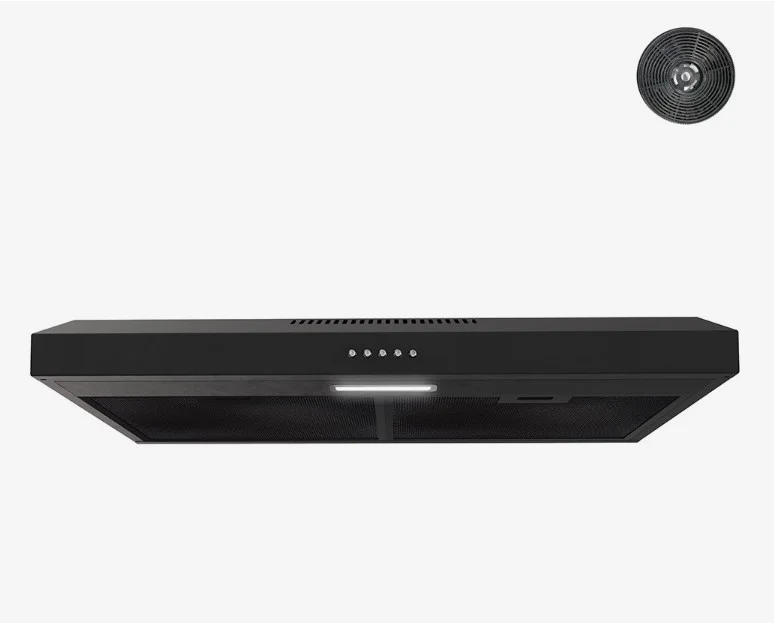Did you know that cooking indoors can generate more pollutants than a busy city street? From fine particulates to invisible gases, your kitchen air can quickly become a health hazard—especially without proper ventilation. That’s why indoor air quality researchers strongly advise regular use of your range hood to maintain a healthier home environment.
Whether you’re sautéing vegetables, boiling pasta, or searing meat, your kitchen activities release pollutants like carbon monoxide, nitrogen dioxide, formaldehyde, and particulate matter (PM2.5). Without a functional range-hood, these pollutants can accumulate in your home, affecting your lungs, skin, and overall wellbeing.
This comprehensive guide explains how using your kitchen range hood can improve indoor air quality, promote better health, and enhance cooking comfort—brought to you by the home improvement experts at StreamlineBath.com.
-
Why Indoor Air Quality Matters
We often think of outdoor air pollution as the biggest health risk—but research shows that indoor air can be 2 to 5 times more polluted than the air outside. In fact, according to the EPA, indoor air pollution is one of the top five environmental health risks in the U.S.
Common Kitchen Air Pollutants:
- Carbon monoxide (CO) – from gas stoves
- Nitrogen dioxide (NO₂) – from combustion
- Formaldehyde – from charred foods and cleaning agents
- Volatile organic compounds (VOCs) – from oils, spices, and sprays
- Particulate matter (PM2.5) – from frying and grilling
Poor ventilation traps these pollutants in your living space, leading to respiratory problems, headaches, eye irritation, fatigue, and long-term health concerns.
-
The Role of Range Hoods in Air Purification
A range hood (also known as a kitchen hood or exhaust hood) is your first line of defense against kitchen air pollution. When used properly, it:
- Extracts harmful fumes
- Filters out grease particles
- Reduces heat and moisture buildup
- Prevents cooking odors from lingering
Types of Range Hoods:
| Type | Description | Ideal For |
| Ducted Range Hoods | Vents polluted air outside the home | Homes with external vent access |
| Ductless (Recirculating) | Filters air through charcoal filters and recirculates it | Apartments or homes without ducts |
| Convertible Hoods | Can be used as ducted or ductless | Flexible installations |
-
Health Benefits of Using a Range Hood
Reduces Exposure to Harmful Pollutants
A functioning range hood draws pollutants out of the breathing zone, reducing your exposure to NO₂, CO, and PM2.5.
Prevents Respiratory Irritation
Cooking, especially on gas stoves, releases fine particles that can aggravate asthma and other respiratory conditions. A range hood improves air circulation, lowering your risk.
Enhances Sleep Quality
Removing pollutants and odors helps maintain cleaner air, which supports better sleep—especially in open-concept homes where the kitchen is close to the bedroom.
Supports Cardiovascular Health
Long-term exposure to indoor pollutants has been linked to high blood pressure and heart disease. A kitchen range hood helps reduce these risks by filtering out harmful particles.
Recommendations from Air Quality Researchers
Indoor air quality researchers and environmental health experts from institutions like Harvard and Berkeley Lab agree:
“Range hoods are one of the most effective tools for controlling air pollutants during cooking. They should be used consistently and maintained properly.”
— Dr. Brett Singer, Indoor Air Quality Researcher
Their key advice:
- Always use the range hood when cooking, especially with gas stoves.
- Use high-speed settings when searing or frying.
- Clean or replace filters regularly.
- Choose a hood with high capture efficiency (at least 200–400 CFM for typical use).
At StreamlineBath.com, you’ll find high-CFM, stylish, and functional range hoods suitable for every kitchen design.
-
When and How to Use Your Range Hood
To maximize performance:
- Turn it on 1–3 minutes before cooking
- Leave it running for 10–15 minutes after cooking
- Use the highest setting when stir-frying, broiling, or grilling
- Always use hoods that cover the full cooking surface
- Choosing the Right Range Hood for Your Home
- CFM Rating (Cubic Feet per Minute)
This measures the power of your range hood. The higher the CFM, the more air it moves.
Recommendation:
| Cooking Type | Minimum CFM Needed |
| Light cooking | 150–250 CFM |
| Moderate cooking | 250–400 CFM |
| Heavy cooking | 400–900+ CFM |
- Size & Coverage
Your hood should be as wide or wider than your cooktop for maximum efficiency.
- Filters
- Mesh filters – effective and easy to clean
- Baffle filters – durable and dishwasher-safe
- Charcoal filters – for ductless hoods, absorb odors
- Noise Level
Look for models with a low sone rating (≤ 4.0) for quiet operation.
- StreamlineBath Range Hood Options
At StreamlineBath.com, you’ll find a diverse collection of wall-mount, under-cabinet, and island range-hoods with features designed to improve indoor air quality.
Featured Models:
| Model Name | Type | CFM Rating | Finish | Best For |
| Gaiola 36″ Ducted | Wall-Mount | 220 CFM | Brushed Stainless | Moderate cooking needs |
| Maddaloni Ductless 30″ | Island-Mount | 350 CFM | Black Stainless | Apartments without ducts |
| Lamon 28″ Insert | Ducted | 350 CFM | Stainless Steel | Hidden installation options |
| Merone 30″ Island | Convertible | 350 CFM | White Glass | Stylish and functional spaces |
Explore all range-hood models for your kitchen type and budget.
- Maintenance Tips to Keep Your Range Hood Efficient
- Clean Filters Monthly
Grease and grime build up quickly. Remove filters and clean them with warm, soapy water or use the dishwasher (if safe).
- Wipe Down Exterior
Use a microfiber cloth to clean the hood surface weekly and remove oil splatters.
- Check the Ventilation Path
Ensure the duct or recirculating system isn’t clogged.
- Replace Charcoal Filters
For ductless models, replace the charcoal filter every 3–6 months to maintain odor control.
- Range Hood + Window Ventilation = Better IAQ
While range hoods are powerful, pairing them with natural ventilation can further improve indoor air quality. Crack open a window or run a ceiling exhaust fan during and after cooking.
- FAQs: Range Hoods & Air Quality
Q1: Can I cook without a range hood?
You can, but it’s not recommended. Cooking without ventilation can drastically reduce air quality and increase exposure to harmful particles.
Q2: How often should I clean the range hood filters?
Every 3–4 weeks for heavy use or monthly for moderate use.
Q3: Are ducted range hoods better?
Yes. Ducted hoods remove air entirely from the home, while ductless models filter and recirculate air. If possible, choose a ducted option.
Q4: Do electric stoves need ventilation too?
Yes! While gas stoves produce more pollutants, electric stoves also release particulates and moisture that benefit from ventilation.
Final Thoughts: A Healthier Home Starts in the Kitchen
Indoor air quality is a silent but powerful factor in your family’s health. By using your kitchen range-hood consistently and correctly, you can protect your home from invisible pollutants, reduce allergies, and breathe easier—literally.
The message from indoor air quality researchers is clear:
Use your range hood every time you cook—your lungs will thank you.
Shop High-Performance Range Hoods at StreamlineBath.com
From stylish wall-mounted range hoods to space-saving under-cabinet models, StreamlineBath.com offers a curated selection of high-efficiency kitchen ventilation solutions. Whether you’re remodeling your kitchen or upgrading your air quality, we’ve got the range hood for your needs.
🛒 Browse our full collection now and make your home healthier, one meal at a time.





